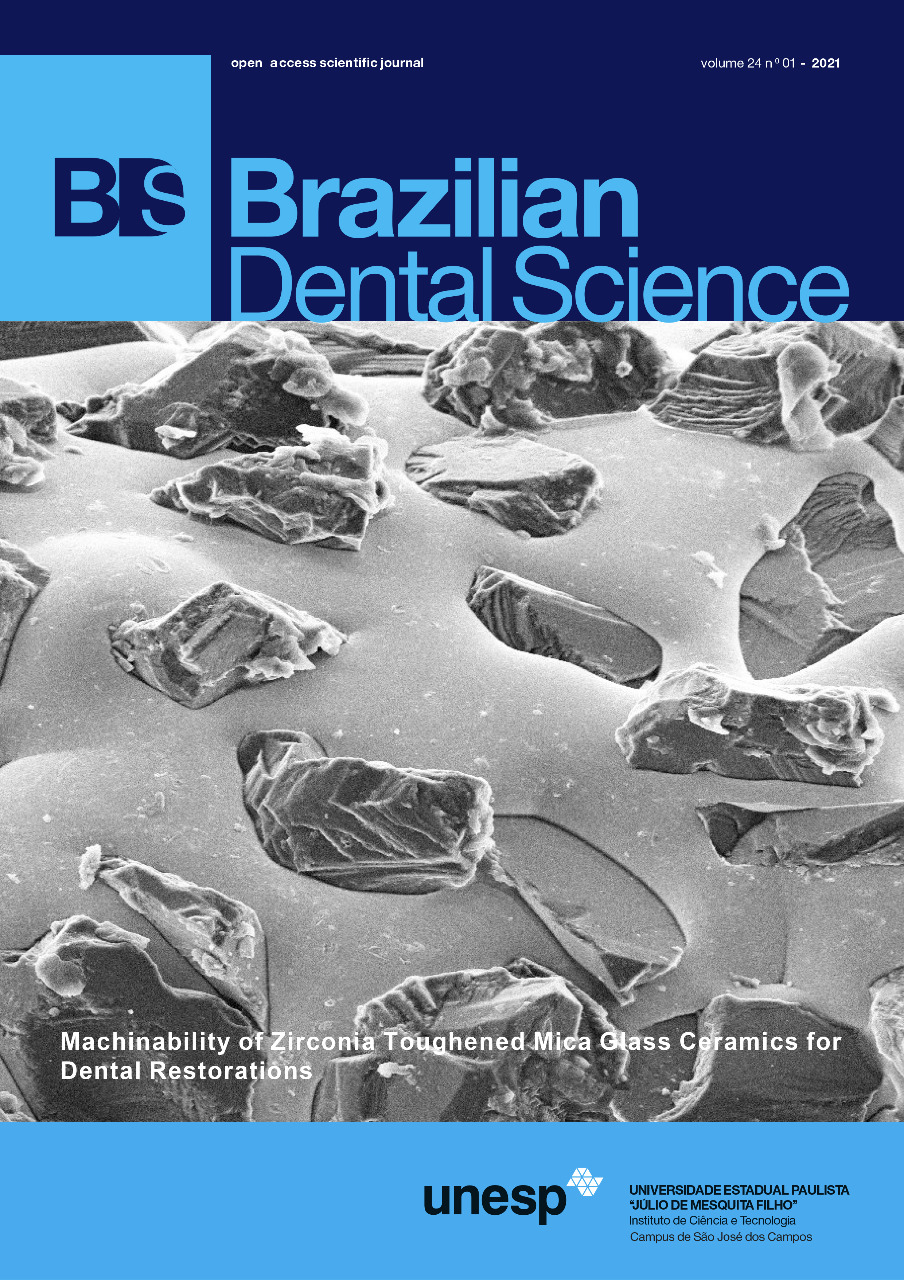Basilar artery dolichoectasia an unusual and rare cause of secondary trigeminal neuralgia: a clinical report
DOI:
https://doi.org/10.14295/bds.2021.v24i1.2273Abstract
Objective: Patients with Trigeminal Neuralgia often consults a dentist for relief of their symptoms as the pain seems to be arising from teeth and allied oral structures. Basilar artery Dolichoectasia is an unusual and very rare cause of secondary Trigeminal Neuralgia as it compresses the Trigeminal nerve Root Entry Zone. Case reports: We report three cases of Trigeminal Neuralgia caused by Basilar artery Dolichoectasia compression. The corneal reflex was found absent in all three of the cases along with mild neurological deficits in one case. Multiplanar T1/T2W images through the brain disclosed an aberrant, cirsoid (S-shaped) and torturous Dolichoectasia of basilar artery offending the Trigeminal nerve Root Entry Zone. Discussion: Based on these findings we propose a protocol for general dentist for diagnosis of patients with trigeminal neuralgia and timely exclusion of secondary intracranial causes. Conclusion: General dentists and oral surgeons ought to consider this diagnosis in patients presenting with chronic facial pain especially pain mimicking neuralgia with loss of corneal reflex or other neurosensory deficit on the face along with nighttime pain episodes. Timely and accurate diagnosis and prompt referral to a concerned specialist can have an enormous impact on patient survival rate in such cases.
KEYWORDS
Basilar artery; Cirsoid dolichoectasia; Corneal reflex; Trigeminal neuralgia.
Downloads
References
Ali M, Ansari SR, Khan MP, Rasool G. Microvascular decompression for idiopathic trigeminal neuralgia: ultimate solution to the management dilemma. PODJ 2009:29(2):193-196.
Shah SA, Murad N, Salaar A.Trigeminal Neuralgia: Analysis of Pain Distribution. PODJ.2008;28:37-41.
Zakrzewska JM. Differential diagnosis of facial pain and guidelines for management. BJA. 2013;111 (1): 95-104.
Tolle T Duke E, Sadosky A. Patient burden of trigeminal neuralgia: results from a cross-sectional survey of health state impairment and treatment patterns in European countries. Pain Pract 2006;6:153-60.
Baskaran K. A Systemic Review of Patients Appearing to Dental Professionals with Trigeminal Neuralgia Arising From Intracranial Tumours. IJSR. 2017:6(5):72-76.
Benoliel, R., Eliav, E. Neuropathic orofacial pain. Oral MaxillofacSurgClin North Am. 2008;20:237–254.
Lye R. Basilar artery ectasia: an unusual cause of trigeminal neuralgia. J of Neurology, Neurosurgery & Psychiatry. 1986;49(1):22-28. doi: 10.1136/jnnp.49.1.22.
Miyazaki S, Fukushima T, Tamagawa T, Morita A. (1987). Trigeminal Neuralgia due to Compression of the Trigeminal Root by a Basilar Artery Trunk. Neurol Med Chir (Tokyo). 1987;27(8):742-748. doi: 10.2176/nmc.27.742.
Takamiya Y, Toya S, Kawase T, Takenaka N, Shiga H. Trigeminal neuralgia and hemifacial spasm caused by a tortuous vertebrobasilar system. Surgical Neurology. 1985;24(5):559-562.
Zhong J, Zhu J, Li S, Guan H. Microvascular Decompressions in Patients with Coexistent Hemifacial Spasm and Trigeminal Neuralgia. Neurosurgery.2011;68(4):916-920.
Vasović L, Jovanović I, Ugrenović S, Vlajković S. Vertebral and/or basilar dolichoectasia in human adult cadavers. Acta Neurochir.2012: DOI 10.1007/s00701-012-1400-7.
Grigoryan YA, Sitnikov AR, Grigoryan GY. Trigeminal Neuralgia and Hemifacial Spasm Associated with Vertebrobasilar Artery Tortuosity. Problems Of Neurosurgery.2016:80(1):36-46.
Smoker WRK, Corbett JJ, Gentry LR, Keyes WD, Price MJ, McKusker S. High-resolution computed tomography of the basilar artery.
Dandy W. Concerning the cause of trigeminal neuralgia. The American Journal of Surgery. 1934;24(2):447-455. doi: 10.1016/s0002-9610(34)90403-7.
Dandy WE. Intracranial arterial aneurysms. Ithaca:Comstock Publishing Co. Inc. 1945:64-6.
Sunderland S. Neurovascular relations and anomalies at the base of the brain. J Neurol Neurosurg Psychiatry. 1948; 11: 243-57.
Noma N, Kobayashi A, Kamo H, Imamura Y. Trigeminal neuralgia due to vertebrobasilar dolichoectasia: Three case reports. Oral surg, Oral Med, Oral Path, Oral Radiol Endod. 2009;108(3): e50-e55.
Ubogu EE, Zaidat OO. Vertebrobasilar dolichoectasia diagnosed by magnetic resonance angiography and risk of stroke and death: a cohort study. Journal of Neurology, Neurosurgery and Psychiatry. 2004; 75(1): 22–26.
Passero SG, Rossi S. Natural history of vertebrobasilar dolichoectasia. Neurology, 2008; 70(1) 66–72.
Campos WK, Guasti AA, Silva BF, Guasti JA. Trigeminal Neuralgia due to Vertebrobasilar Dolichoectasia. Case Reports in Neurological Medicine Vol. 2012, Article ID 367304, 3 pages, doi:10.1155/2012/367304.
Downloads
Published
How to Cite
Issue
Section
License
Brazilian Dental Science uses the Creative Commons (CC-BY 4.0) license, thus preserving the integrity of articles in an open access environment. The journal allows the author to retain publishing rights without restrictions.
=================




























